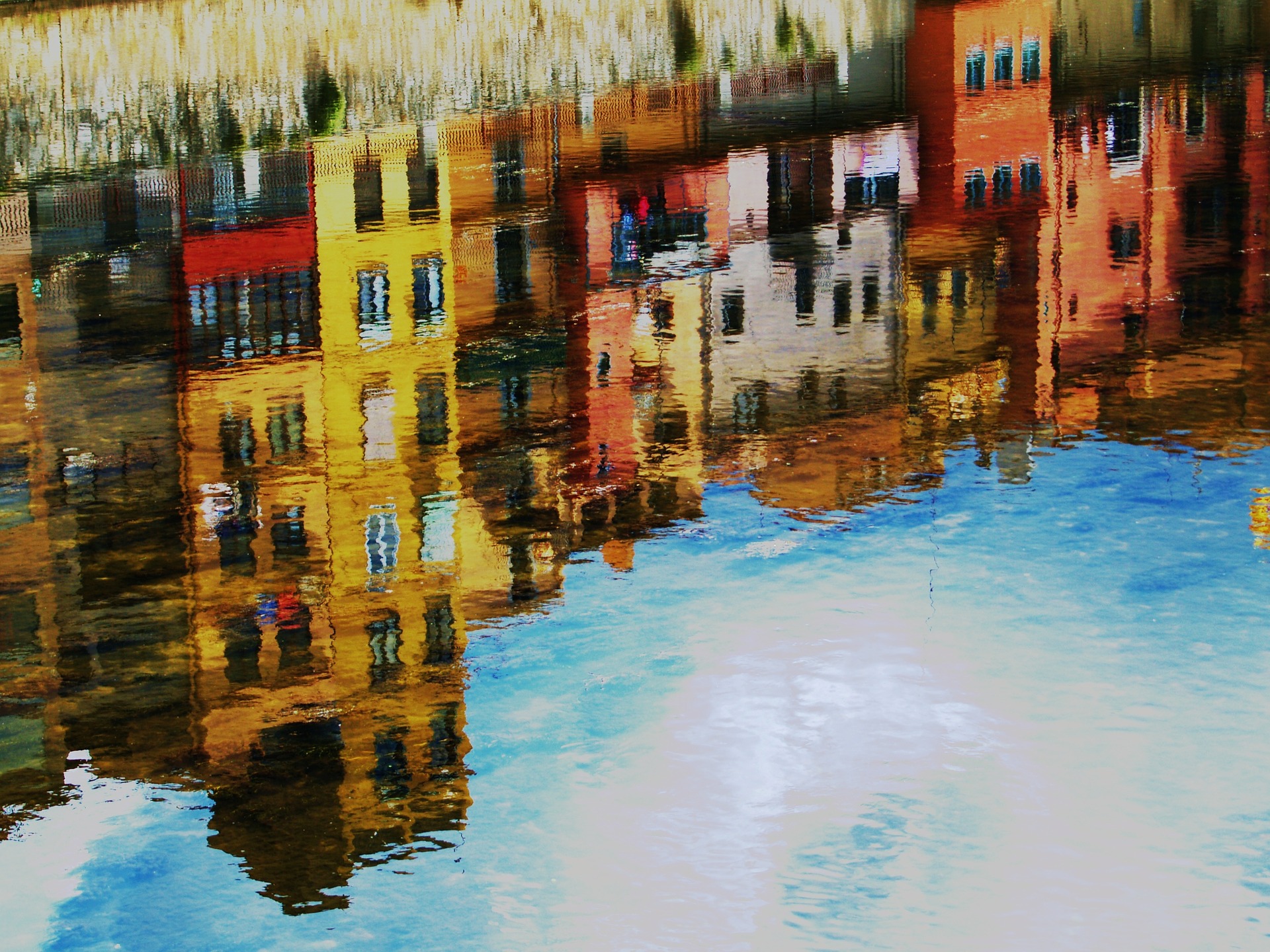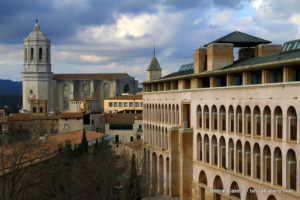

Around 100km Northeast of Barcelona, lies the City of Girona. Boasting an Old Town (Barri Vell) bounded by extensive medieval fortified walls, it is well worth a visit if you are staying in Barcelona for any length of time. There are at least 20 trains a day from Barcelona Sants, taking between 1 and 1.5 hours (€17.60 return). There is also a high-speed service which is double the price but only takes 40 minutes. If you are in no hurry then the slower service makes for an enjoyable trip through the lush, green and mountainous Catalan countryside.
Table of Contents


Photo credit: bernat… via Visualhunt.com / CC BY-NC-ND
Girona has been inhabited since the time of the Iberians, who made a settlement at this strategic meeting point of four rivers surmounted by a tall and easily-defensible hill. It later became the Roman citadel of Gerunda. Following the Fall of Rome, the city was ruled by the Visigoths; captured by the Moors in 715 and retaken by Charlemagne in 785. It became one of the original Counties of Catalonia and has remained an important Catalan city ever since. The Jewish community of Girona flourished from the 12th Century until their expulsion in 1492 by the Catholic Monarchs Ferdinand and Isabella. The Jewish Quarter or Call still survives and houses the Museum of Jewish History. Despite being besieged many times, mainly by French forces during the 17th – 19th Centuries, the Old Town of Girona has been remarkably well preserved. The original city walls were built by the Romans, and a later medieval structure built on top of these foundations. Partly torn down at the end of the 19th century in order to accommodate the city’s burgeoning population, the City Walls, which were once the most extensive in medieval Europe, have been partially restored. Today you can walk the Passeig de la Muralla and enjoy views over the medieval city to the mountains beyond. It is a stunning way to appreciate the city, particularly in the morning or early evening when the sun is not too strong.
Related article: Tarragona, a city with a Roman history
Photo credit: SBA73 via Visualhunt.com / CC BY-SA
The central focus of Girona’s old town is its imposing Cathedral, construction of which was begun in the 11th Century AD, and continued (in the form of additions and adaptations) until the 18th Century. From the outside, its sheer bulk is impressive, as well as its Baroque facade and Romanesque Charlemagne tower. It is well worth visiting the inside of the cathedral (€7 including audio-guide) in order to see the Romanesque cloister and breathtaking Gothic Nave (the widest example of its kind surviving today).
In addition to the Cathedral, many important religious buildings and museums can be found here. Highlights include the Basilica of Sant Feliu (pictured right), which stands out along the city skyline with its spired bell tower. The city’s university is partially housed in the early Catalan Gothic monastery of Sant Domènec, which boasts a large cloister and is an early example of this celebrated architectural style. The surviving church and cloister of the Romanesque monastery Sant Pere de Galligants houses the Girona branch of the Archaeological Museum of Catalonia. The best museums include the Museum of Jewish History (see above); Girona History Museum and the Banys Arabs (11th-Century Bath-house built in the Arabic style). If you have time to do nothing else, simply wander the alleyways and climb the winding stone staircases in order to appreciate this preserved enclave of Catalonia’s medieval past.
This article has dealt mainly with the Old Town of Girona, but the wider city also boasts many more attractions, including one of the world’s best restaurants (El Celler de Can Roca) and many other very fine ones. It is the perfect place to visit for a day trip but there is so much to see and do that you will probably want to stay longer, and come back many times.
Barcelona’s Mediterranean climate, with increasingly warmer and longer summers, makes air conditioning an essential feature…
Maybe you're thinking about selling a property or you've just inherited one or more real…
Do you enjoy strolling among trees and plants, away from the hustle and bustle of…
If you are planning to move to Barcelona for a few months or permanently, one…
ShBarcelona establishes itself as the leading agency within the Apialia Eixample Group, reaffirming its position…
Are you going to visit Barcelona this 2025? The vibrant Catalan capital once again becomes…